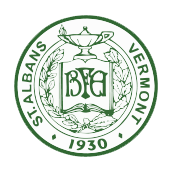Dear Parents/Caregivers and Staff:
In 2021, the Vermont legislature passed a law requiring all schools to test for radon (see Section 12 of Act 72 (2021)). Our school begins the testing process on January 29th, 2024 ending on January 31, 2024. During the testing, we need to keep all of the windows closed. Fresh air ventilation equipment will be operational.
Below are answers to some frequently asked questions about radon testing.
Why is our school being tested for radon?
Radon is a naturally occurring radioactive gas found in rocks, soil, and water. The Environmental Protection Agency (EPA) estimates that 21,000 people die each year in the United States from lung cancer due to radon exposure. Radon is also the leading cause of lung cancer among people who don’t smoke. Because it has no color, smell, or taste, testing is the only way to know if radon is in a building. This is why the Health Department and the EPA recommend that all homes and schools be tested for radon.
Homes and schools are the places where people are typically exposed to the most radon. Because students and staff spend a lot of time at school, it’s important to make sure we don’t have high levels of radon in our school building. Other schools in Vermont have tested for and found high levels of radon. Once they did, they were able to easily fix the problem.
How does radon enter a school building?
Many factors contribute to radon entering a school building. Schools in nearby areas can have significantly different radon levels from one another. Here are some reasons why some schools have elevated radon levels and others do not:
- The concentration of radon in the soil and permeability of the soil under the school building
- Structure and construction of the school building
- Type, operation, and maintenance of the heating, ventilation, and air-conditioning (HVAC) system
Why is the testing taking place while school is in session?
Because radon levels can fluctuate throughout the year, radon testing is done during the heating season. Radon levels tend to be the highest during this time since the windows and doors are closed up. The testing period needs to include the time when the school is occupied and operating under normal heating conditions. If we tested when the building is not occupied, we may not be able to determine the actual amount of radon students and staff are exposed to.
Which rooms will be tested?
Every classroom, office, and other commonly used room that is in contact with the ground or above a crawl space or basement will be tested. A small portion of the upper floors will also be tested. Storage rooms, locker rooms, kitchens, and bathrooms will not be tested. Most rooms will have only one radon detector. Some rooms will have more than one.
Len Smith, Director of Facilities, Bellows Free Academy

